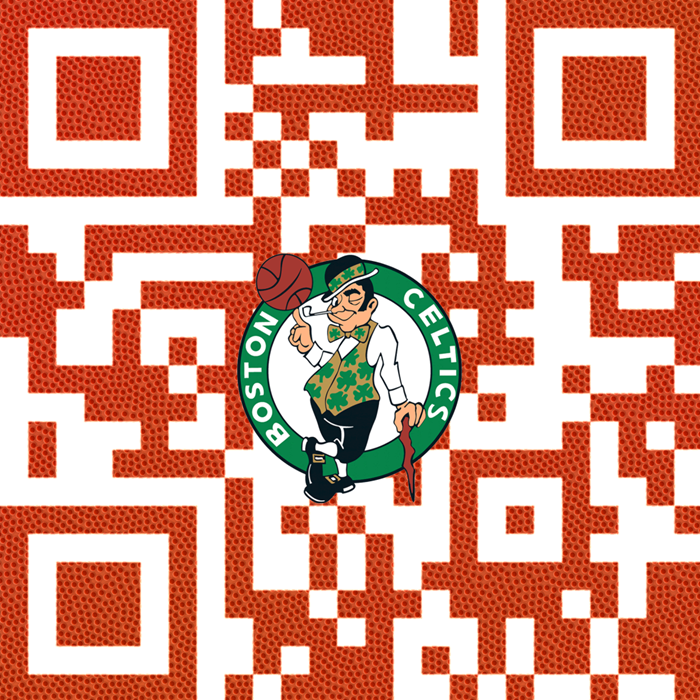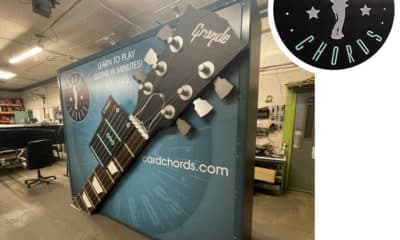When we look around at the worlds of marketing and communications, I’m sure we all agree: Things are changing fast, and the immediacy of the message is no longer just an option – it’s a requirement. People want their information, and they want it now.
Your clients are no different—they, too, are busily evaluating all channels of communication in an effort to reach their own most important audience: their customers. Yes, they’re looking at traditional media such as wide-format print applications, but they’re also considering other channels as well, including social media and mobile marketing, both of which are capable of responding to the consumers’ call for speed.
For print providers, then, a technology that would integrate these new marketing channels with traditional media would be ideal. Lucky for us, that technology is indeed available– in the form of Quick Response (QR) codes, which can deliver your customer’s’ message, push customers to your client’s website, and enable your clients to track results, all with just the snap of a smart-phone camera.
Getting started: QR codes 101
For those unfamiliar with the technology, QR codes are 2-dimensional barcodes that have been around since 1994—widely used throughout Japan and in parts of Europe to direct customers to company websites using a smart phone. And with the increased adaption of smart mobile phones, QR codes are quickly rising in popularity in the United States.
Accessing the information that QR codes hold is simple. Some phones come with QR Code readers pre-installed. Others require you to download them. Most QR readers are free; popular options include Blackberry Reader, Neo Reader, QuickMark, IMatrix, and many more.
Once your mobile device contains a QR code reader, you simply point your phone to the code, snap a picture, and the software on your phone decodes the image. Instantly, you are directed to a website or landing page with information about the product or company of interest. They may also take you to a video or a social-media page that promotes your company, which opens the door to two-way communication. In short, QR codes make it easy for consumers to quickly jump from a printed graphic to the Web with the help of their mobile devices.
Advertisement
Providing consumers with the ability to respond at the very moment you pique their interest has tremendous value. For example: A man sitting on a bus snaps a picture of a QR code on a billboard as he passes by. He’s taken to a website where he accesses a coupon that he can use at a store by simply showing the cashier his cell-phone display. By making cell phones the response mechanism, you remove many of the barriers to action response.
QR convenience
One of the most important benefits QR codes offer is the ability to tie together print, mobile, and Web in an effort to increase the response rate and reach individuals through their preferred channel – their smart phone — a media that they happen to be carrying with them the majority of the time. QR Codes can easily boost the effectiveness of print for multiple reasons, including:
• Providing one-to-one communication: URLs can be embedded right into QR codes, so when the recipient scans the code he is taken directly to a landing page. Once the recipient is at the page, the QR code owner has the opportunity to engage him in a one-on-one-dialogue. Also, because sharing your link via social-media sites is so easy for the customer, the chances of your site/video going viral rise dramatically. The share-ability offered by QR codes brings a whole new meaning to word-of-mouth marketing.
• Making it easy to respond: QR codes make landing pages portable. They allow the recipient to access each individual website without needing to be sitting in front of a computer. Because people are on the go, and many carry their phones with them at all times, this portability is ideal in increasing the response rate. Additionally, QR codes eliminate the need for the recipient to type a lengthy URL into their Web browser. By pressing one button, the recipient is automatically directed to the website, eliminating the chance of typos and decreasing the effort required by the recipient to access the information.
• Measuring the success: As with anything business related, it’s the result and success that’s most important. Being able to measure the success of any marketing initiative is crucial. Not only will it be helpful to you in determining which of your customers are interested in the technology, but it provides quantitative data showcasing your success, which you can share with your customers. Additionally, if your customer is going to take the leap and integrate QR codes into their printed materials, they will definitely want to be able to measure the results, allowing them to better determine customer behavior.
• Monitoring scans of the code: Various software programs have the ability to record the amount of scans per day, what time those scans took place, the location of the scans, and the types of devices being used to scan the code. For example: a healthcare-provider billboard geared toward members with allergies, promoting a new over-the-counter drug. The graphics feature a QR code that directs the recipient to a website with additional information. Using these software programs, the healthcare provider can gauge interest in the new drug and monitor how many people scanned the code each day, as well as which geographic regions they reside.
Advertisement
• Gathering customer information in real-time: It’s also possible to take QR codes one step further and use them to capture contact information on each customer. With the right software, it’s possible to direct the users to a landing page that will request their contact information before they’re allowed to proceed. Your customer will garner valuable knowledge previously unattainable at that point of engagement, allowing them to update mailing lists.
Measurement and Tracking
By offering your clients ways to track the success of a building wrap or movie poster, you can keep them coming back and help justify the expenses of initiating expensive marketing initiatives involving wide-format graphics. Maximizing success with QR codes is made simple by the multitude of inexpensive online software options available that allow you to create QR codes and view the success of your efforts through real-time reports. Among the result-data that can be obtained from QR software is:
• Number of scans: find out how many people have scanned your QR codes.
• Activity by the day and hour-by-hour: curious when people are reading your marketing collateral or checking out your outdoor graphics? QR software programs generate charts helping you track when people are scanning your QR codes.
• Devices being used: because all phones read Web material differently, it is important to know what phone models are being used so you can optimize the viewing experience.
• Locations of people scanning your codes: track which billboards are generating the most leads and greatest return on investment (ROI).
Advertisement
• ROI: creating marketing campaigns requires an investment of time and money and QR software monitors how much it costs to deliver leads through these campaigns.
Successfully implementing
Once you make the decision to integrate QR codes into your mix of services, there are a few best practices to keep in mind.
First of all, keep it simple. Although QR codes can store quite a bit of information — up to 7089 numbers, 4296 letter and numbers, or 2953 bytes (binary characters) — it’s best to keep it short and simple. The longer the information, whether it be a URL or a short marketing pitch, the more complex the code, the harder it is for a smart phone to read. Shorten your URL for free at sites like tinyurl.com. A simple, clean QR code ensures customers will be able to snap a shot quickly and obtain an accurate read.
Second, clearly understand barcode differentiation. Understanding the various size and deterioration limitations for the QR code graphic is critical to effectively using this technology. QR codes may still be readable with up to 30-percent deterioration. This allows you to take a few liberties when it comes to the design, such as placing your logo in the middle or adding a “wrapper” around the code that fits with the overall creative theme of your printed material. There is software on the market that makes it extremely easy to generate QR codes independently or as an integrated part of the company’s end-to-end personalized marketing solutions. Branded QR Codes increase scan rates 25 to 30 percent, according to The Ace Group, the New York City-based print and electronic-marketing solutions provider (now part of DG3 North America).
Third, know how to educate without cluttering: Not every consumer is familiar with QR codes. So, it may be necessary for a campaign to educate the consumer directly on the printed material – but be careful not to clutter and take away from the printed piece’s main message. To do this, you will want to provide specific instructions that make it clear that people can take a picture of the code with their phone to access additional information. You may even want to provide a website URL that allows them to download a QR code reader.
The best way to begin transitioning QR codes into your service offering and effectively market this new capability to your customers is to integrate the technology into your shop’s own promotional graphics. For example, Sir Speedy of Tampa printed its own direct-mail promotion complete with the recipient’s customized QR code to engage interest. When the customers received the mailer, they were encouraged to scan the code and upon doing so were promptly taken to the Sir Speedy website. Of course, QR codes can be utilized for a plethora of other corporate-identity and promotional items, from business cards and letterhead to fleet graphics, internal and external signage, and more.
Goin’ Mobile
You may be asking, “Are that many people even using smart phones?” The answer is yes. More than 63 million Americans own smart phones– 19 million of who access the Internet on a weekly basis, according to American Online (AOL). And a recent study from IPG’s Universal McMann and AOL found that almost 15 percent of all media consumption now occurs via mobile devices. That same report indicates that mobile usage is expected to grow by 60 percent over the next two years.
Should QR codes be in your future?
QR codes are one of the hottest applications in the marketing world today and for good reason—the concept of building digital elements into mail and printed graphics is a win-win. The codes are easy to create, print, and track, and cost little or nothing to add to your graphic applications.
As customers continue to seek communications through multiple channels, print shops that recognize the growth of QR codes and act upon it are better positioning themselves to provide the information their customers want, when they want it. QR codes are an immediate-response mechanism that catches consumers at the very moment of interest: walking, reading, playing, shopping, traveling. They take advantage of every opportunity in a big way. If QR codes aren’t on your marketing “to-do” list, they should be.
Jason Pinto is chief marketing officer of interlinkOne (interlinkone.com), a Wilmington, Massachusetts-based provider of integrated marketing solutions, including software for marketing, sales, Web-to-print, and more.


 Best of Wide Format2 months ago
Best of Wide Format2 months ago
 Best of Wide Format2 months ago
Best of Wide Format2 months ago
 Blue Print3 weeks ago
Blue Print3 weeks ago
 Best of Wide Format2 months ago
Best of Wide Format2 months ago
 Best of Wide Format2 months ago
Best of Wide Format2 months ago
 Best of Wide Format2 months ago
Best of Wide Format2 months ago
 Best of Wide Format2 months ago
Best of Wide Format2 months ago
 Best of Wide Format2 months ago
Best of Wide Format2 months ago















